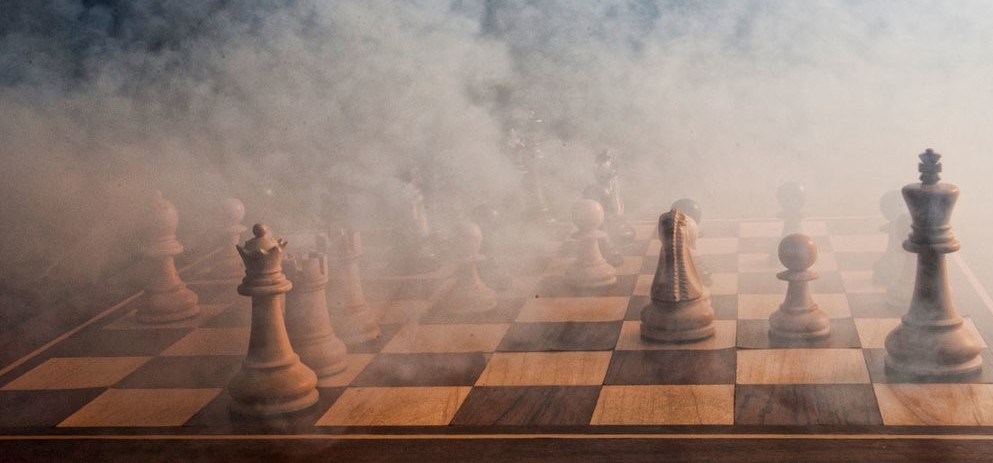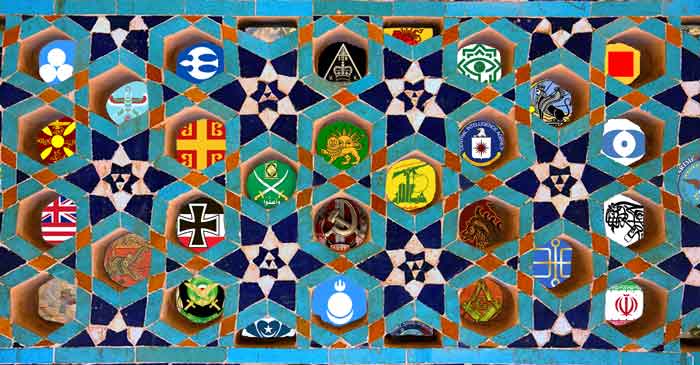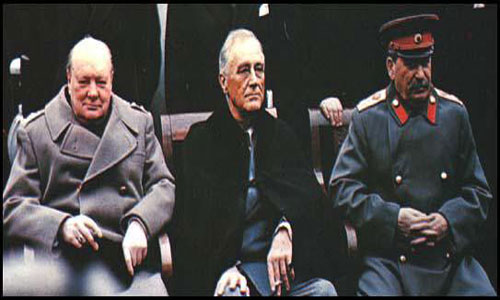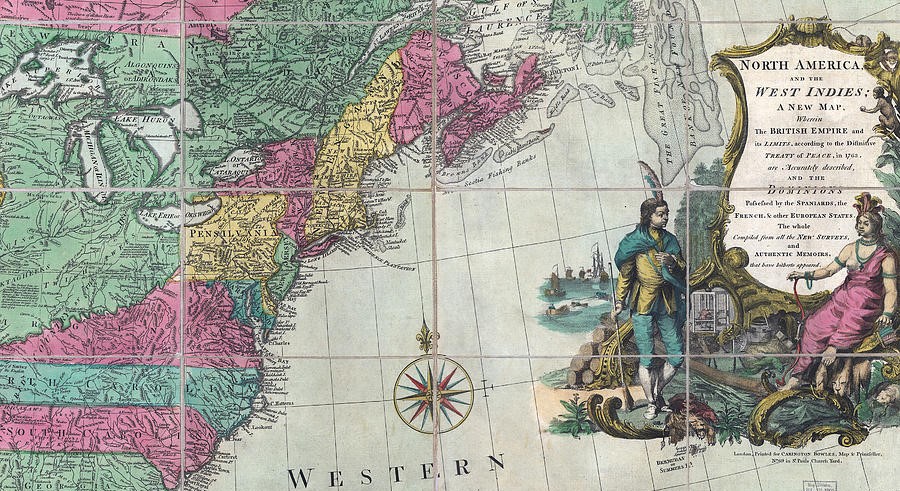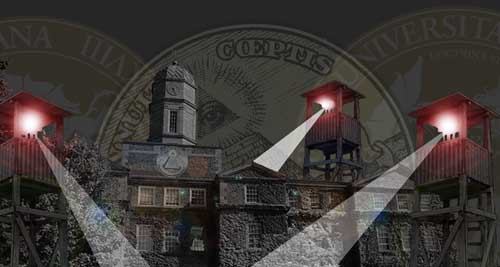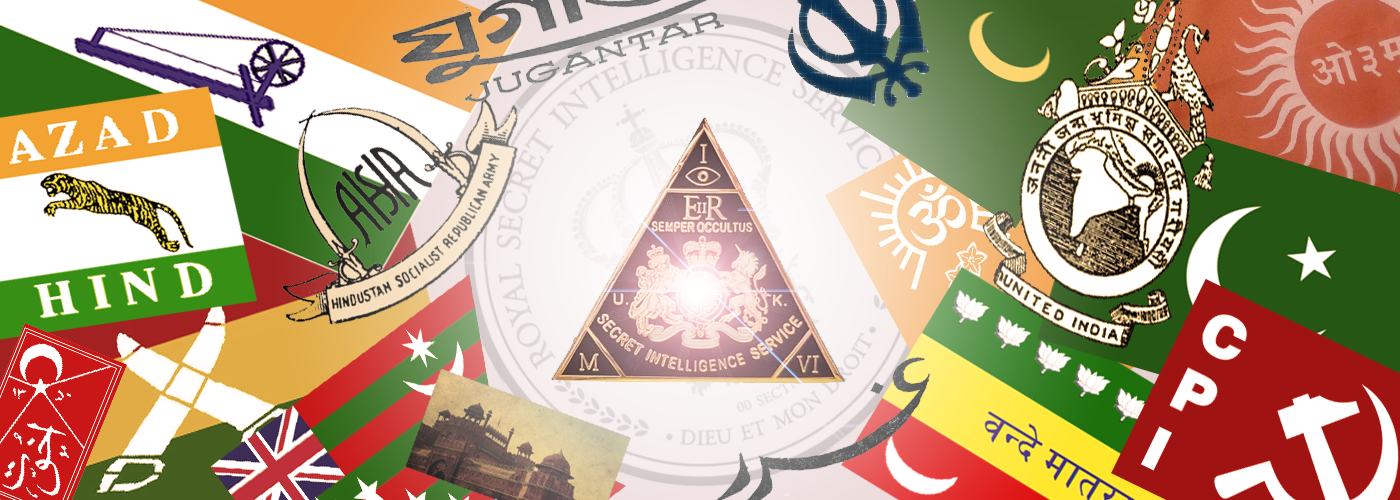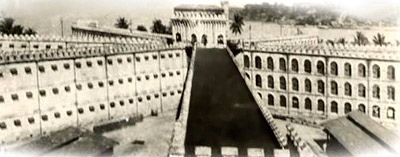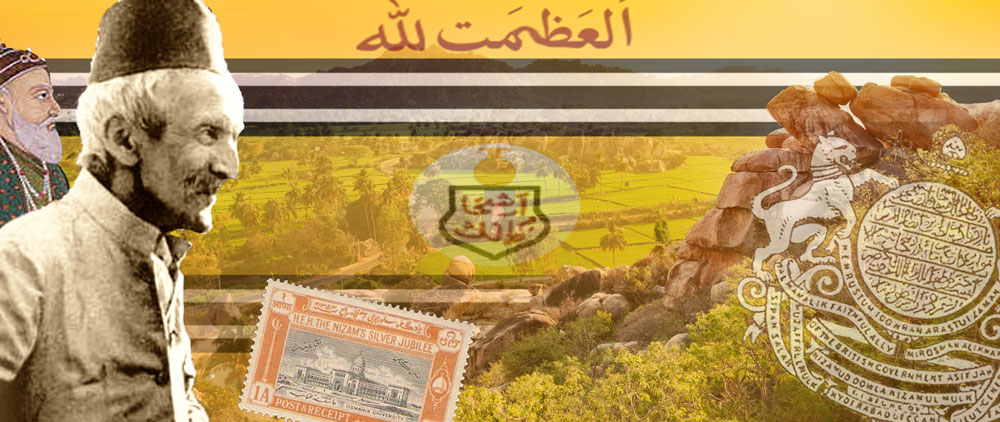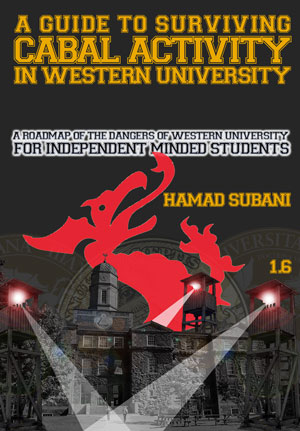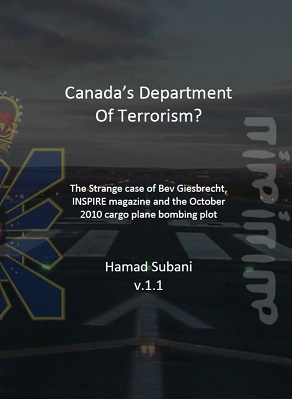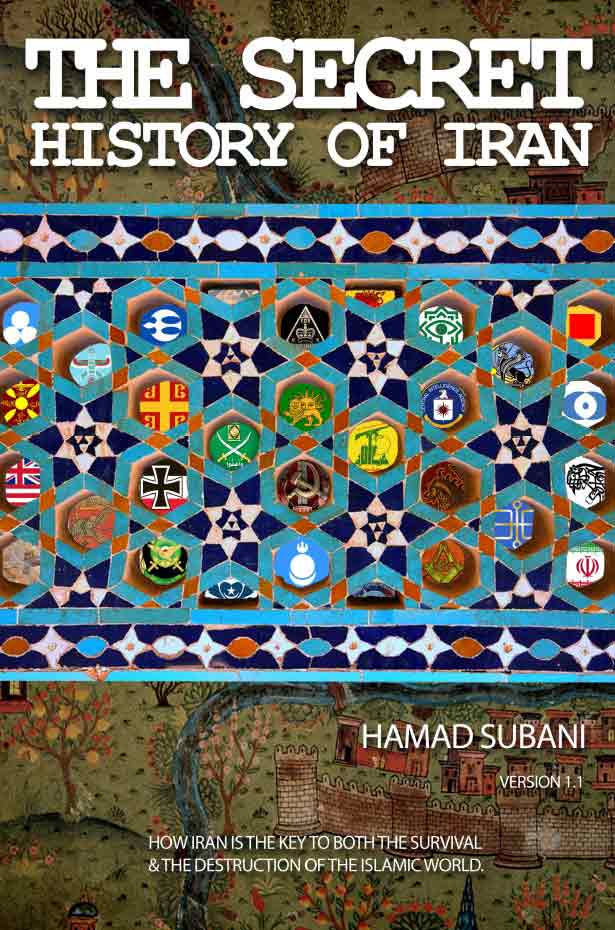
Phoenician Spookopolis’ Across the Subcontinent
Before we proceed any further, it is necessary to get acquainted with the concept of the Phoenician Spookopolis’. The theory goes like this.
- Where there is a Phoenician at a place, there is Spookery in the vicinity.
- Where there are three Phoenicians at the same place, there is 3x Spookery in the vicinity.
- Where there are several Phoenician families for generations in the same place, the magnitude of Spookery turns the place into a veritable Spookopolis. The place literally emits Spook vibes and starts levitating in Spookery (which can be picked up by sensitive and attuned people, but that is a different story).
- A Spookopolis may be little known village, an entire district, a city or even a town. But it is completely different from a normal village, district, city or town. It is a repurposed tool of the Phoenicians. And it can be seen throughout time furthering their Spookery.
In some of my earlier research, I discovered that the Phoenicians had already established themselves in a number of places across India, long before 1857. If we consider the Rebellion of 1857 as another Phoenician project, we would naturally expect all their spook towns to play an active role in the project. We would also expect the same places to be involved in later Spook projects, such as questionable “Freedom Movements,” because an acorn does not fall far from its tree.
We also notice the royal women of some of these princely Spook States marrying into almost all other Indian royalty in acts of soft conquest (Among Jewish-origin people and Phoenicians, religious identity is passed by the mother). Presently, 90% of titular heads of former princely states in the Subcontinent can be considered having Jewish-Phoenician blood. No wonder the British did not bother annexing the princely states.
Note: Zoom into the map below by pressing + for details
Legend:
█ Text highlighted in Yellow indicates relevance to the 1857 Project.
█ Text highlighted in Blue Indicates relevance to the later “Freedom Movements.”
Spookopolis’ in present day Madhya Pradesh, India
Many of these places are connected with the last Maratha Empire of the crypto-Jewish Chitpavani Peshwas (not to be confused with the earlier exploits of Shivaji). When the Maratha Empire collapsed after the Third Battle of Panipat, their soldiers retreated to the mountain-forests of the Konkan. But their crypto-Jewish elite had no desire to leave North and Central India. They had in fact, become addicted to playing intrigues at the Mughal court. So they quietly set shop in attractive commercial and strategic places. Most of these places were originally established by local Rajput and Bhil chieftains, who got pushed aside. Some of these Spookopolis’ are:
- Indore State
- Indore State mysteriously emerge unscathed from the Anglo-Maratha wars, during which several major Maratha chiefs got uprooted.
- Indore had a major British cantonment at Mhow, which provided rebel sepoys for the 1857 Project (and later on, fresh reinforcements from South India to mop up the Rebellion).
- Indore’s districts of Maheshwar, Nimar and Mahidpur were active in the 1857 Project, and many rebels from these places ended up being deported to the Andamans. Yet no one ever questioned the ruler’s involvement.

- During the 1857 Project, the British Residency at Indore was taken by the “rebels” who claimed to be acting on behalf of the ruler, and the British officials were given a safe exit.[1]An Indian Nationalist (Later attributed to Vinayak Damodar Savarkar), The Indian War of Independence of 1857 (London: Unknown 1909).p 216 Yet, the rulers of Indore were later spared the wrath of the British.
- Indore is home to a major Spook school of British India, which was established mainly for the children of princely states.
- Despite its small size, Indore state was accorded a 21 gun salute by British authorities! This was normally reserved for big and powerful princely states like Hyderabad state.
- After 1947, Mhow in Indore became home to The Infantry School, Military College of Telecommunication Engineering and the Army War College.
- Currently, Indore is the most surveilled city in the world (excluding Chinese cities).
- According to some sources in the Haryana Police, the Samjhauta Express bombing of 2007 was connected to Indore. The suitcases were purchased from Indore. The tailors who stitched the covers of the suitcases were from Indore and other materials were also purchased from Indore. The Haryana Police claimed that the Madhya Pradesh police refused to cooperate with them once they discovered the connection to Indore.
- In the Ajmer Sharif Dargah Bombing case, the explosives were wrapped in newspapers published from Ujjain and Indore.
- Gwalior State This was originally a Mughal outpost. It seems the cryptos took over after they poisoned the noted Maratha statesman Mahadji Scindia.
- Ujjain was the former capital of Gwalior State. V. D. Savarkar wanted it to be the capital of India.[2] Vinayak D. Savarkar, The Story of MY TRANSPORTATION FOR LIFE (A Biography of Black days of Andamans) Trans. From the Marathi original Maazi Janmathep by V. N. Naik (Ebook by Chandrashekhar V. Sane, 2016) p. 137. <https://library.bjp.org/jspui/handle/123456789/292> Accessed 12/12/2022. This indicates that it is a very important Spookopolis.
- Gwalior State mysteriously emerge unscathed from the Anglo-Maratha wars, during which several major Maratha chiefs got uprooted.
- Neemuch: A town which contributed rebel sepoys to the 1857 project. This group of sepoys tried to create a split among the rebels gathered at Delhi.
- Mandsaur: A town which contributed rebel sepoys to the 1857 project.
- The entire British-Indian army in Gwalior was later turned over to Tatya Tope, infantry, cavalry, artillery and all! The ruler’s complicity in this was never questioned.
- Shivpuri was the summer capital of the Spookopolis of Gwalior. Tatya Tope was allegedly hanged here.
- Despite its small size, Gwalior state was accorded a 21 gun salute by British authorities! This was normally reserved for big and powerful princely states like Hyderabad state.
- One of the arrested conspirators in the assassination of Mahatma Gandhi was Dr. Parchure. He was a resident of Gwalior and a British subject. The revolver used in the assassination was also sourced from Gwalior.
- Bhopal State: This “Muslim” princely state dates back to the Mughals, and it seems intriguing against Muslims is their speciality.
- During British rule, they were transporting scholars from Riyadh (present-day Saudi Arabia), teaching them Salafism and Wahabism before sending them back to Ottoman-controlled Arabia. It seems the objective was to undermine Ottoman rule in the region. Since the British were involved, they pretended not to notice until the Ottomans issued formal complaints.
- Despite its small size, Bhopal state was accorded a 21 gun salute by British authorities! This was normally reserved for big and powerful princely states like Hyderabad state.
- The current ruling elite of Bhopal has even established itself among the Criminal Elite of Pakistan!
- Birthplace of Rajneesh. In the 60s and the 70s, the CIA started aggressively importing Indian Godmen to distract the Hippies, who were becoming a formidable antiwar movement.
- Site of the biggest industrial “accident” in human history.
- On 12th April 2008, Lt. Colonel Purohit (a disgraced Indian army official involved in terrorism) held a meeting with his accomplices at Bhopal.
- Gaurihar State: Ruled by a Deshastha Brahmin royal house.
- Panth-Piploda Province: Became a province of British India in 1942. Prior to that, it was ruled by a Deshastha Brahmin royal house. At some point earlier, it was part of Jaora State, a Muslim ally of the Marathas.
- Jabalpur City: A spook nest of a city.
- Originally, Jabalpur was a capital of the Gond kingdom of Garha. Its last great king Hridayshah was an ally of the Mughals. In 1742, The Chitpavani Peshwa Balaji Baji Rao killed the ruling the Gond king Maharaj Shah. In 1781 the last ruling Gond king Narhar Shah was tortured to death by the Maratha general Moraji. Later, the Gond Kingdom was turned over to the British and the titular king Shankar Shah was made a pensioner. In the 1857 Project, Shankar Shah was incited by Nana Saheb to participate. Shankar Shah, his son and 13 others (note Spook marker) were blown up on the mouths of cannons. After their deaths, Jabalpur was converted into a spook nest.
- In 1858, Jabalpur was used as muster point for fresh British-Indian sepoys from South India (and from allied princely states) to proceed upwards and mop up the rebels in North India.
- Aloysius Senior Secondary School was an important British Spook school during British rule. Robertson College was another important Spook school during British rule. The oldest Science College in India is also located at Jabalpur.
- Birthplace of Abani Mukherji, a founder of the Communist Party of India. He married a Russian-Jewish woman.
- Birthplace of CIA asset Maharishi Mahesh Yogi. In the 60s and the 70s, the CIA started aggressively importing Indian Godmen to distract the Hippies, who were becoming a formidable antiwar movement.
- Sagar: A town that had a British cantonment.
- Used to supply rebel sepoys to North India for the 1857 Project.
- Kalinjar Fort on the Uttar Pradesh – Madhya Pradesh border: This used to be occupied by the Chitpavani Maratha Peshwas. It was later passed over to the East India Company by treaty, and the old Bhatt royalty was was granted the separate estates of Kirwi, Attra, Chitrakut Mathond and Khurand.
- During the Rani of Jhansi’s rebellion, the Bhatt royalty attempted to take back the fort from the Bundelas.
It should be noted that Indore, Gwalior and Bhopal are clustered together in present day Madhya Pradesh, and along with Baroda in neighbouring Gujarat, constitute a veritable Spookery Complex of India, sometimes even referred to as the Deep State of India. If the full scale of their Spookery was to be investigated, it would fill all the 32 volumes of the Encyclopaedia Britannica. You would be expecting the Police and Intelligence Agencies of the country doing exactly that, but instead, they have been converted into private armies of the Phoenicians.
It should be noted that Indore, Gwalior and Bhopal are clustered together in present day Madhya Pradesh, and along with Baroda in neighbouring Gujarat, constitute a veritable Spookery Complex of India, sometimes even referred to as the Deep State of India.
Other Spookopolis’ Connected to the Maratha Peshwas
 While the Peshwas were of Chitpavani origin, it seems that many other groups also followed their conquests into the Indian heartland, such Karhade brahmins, Deshastha brahmins and Konkanastha brahmins. There are theories that many of these groups are also of similar (Spanish?) origin, and this may somewhat explain the overlap between their ancestral coastal strongholds, and later Portuguese colonies (in some cases). On the other hand, the original Marathas of Shivaji’s retinue seemed to have little interest in settling anywhere else other than Maharashtra.
While the Peshwas were of Chitpavani origin, it seems that many other groups also followed their conquests into the Indian heartland, such Karhade brahmins, Deshastha brahmins and Konkanastha brahmins. There are theories that many of these groups are also of similar (Spanish?) origin, and this may somewhat explain the overlap between their ancestral coastal strongholds, and later Portuguese colonies (in some cases). On the other hand, the original Marathas of Shivaji’s retinue seemed to have little interest in settling anywhere else other than Maharashtra.
Legend:
The following color blocks indicate the respective ruling elite:
▲Indicates Chitpavani Brahmin Ruling House
▲Indicates Karhade Brahmin Ruling House
▲Indicates Deshastha Brahmin Ruling House
- Baroda State ▲; 1870 onwards. (present-day Gujarat, India).
-
Baroda State was actually founded by longtime enemies of the Chitpavani Peshwas, known as the Dabhades. The last legitimate ruler of Baroda State was Khanderao II Gaekwad (pictured right). He was an admirer of Islam and actually commissioned a pearl carpet for the grave of the Prophet of Islamﷺ which is currently on display in a Museum in Qatar. Khanderao died in 1870. His third wife was overly intriguing, and with the help of this widow, the British put on the throne a young child who later became the Spook king, and under him, Baroda transforms into a Spookopolis. This young child did not belong to the widow as she had a girl. Instead he was sourced from the vicinity of the Spookopolis of Nasik, which is a Chitpavani stronghold. The widow later realized that she had been played, and thanks to her perfidy, not only did she lose control of the State but the throne slipped out of Maratha hands forever. It seems that the Nizam of Hyderabad secretly assisted her in her later (failed) attempts to claim back her throne.
- A minister of the young child who was placed on the throne (Maharaja Sayajirao Gaekwad III) was a mega-spook known as ▲ Madhava Rao. He also served as a minister of the Spook states of Indore and Travancore.
- Another minister of Maharaja Sayajirao Gaekwad III was the Parsi Dadabhai Naoroji. In 1874, he would become the Prime Minister of Baroda. He was also a notable Freemason. In 1906, he became President of the Indian National Congress.
- Maharani Chimnabai, the second wife of Maharaja Sayajirao Gaekwad III was a raging feminist who in 1914, stopped observing the purdah system prevalent among Indian women. She was appointed Life Council of the National Association of Women in India in 1925 and was President of the first All Indian Women’s Conference in Pune in 1927.
- Her daughter became Queen of the princely Spook-state of Cooch Behar.
- Pretend-Muslim “Reformer” and crypto-Jew Atiya Fyzee met Maharaja Sayajirao Gaekwad III in London in 1906. Atiya later pursued music at the All India Music Conference of Baroda, patronised by the same Maharaja. Her husband, a Jew named Samuel Rahamin was an art advisor to Maharaja Sayajirao Gaekwad III.[3]Siobhan Lambert-Hurley and Sunil Sharma, Atiya’s Journeys – A Muslim Woman from Colonial Bombay to Edwardian Britain (New Delhi: Oxford University Press, 2010) p.34. Atiya’s cousins, Abbas and Ameena Tyabji were residents of Baroda.[4]Siobhan Lambert-Hurley and Sunil Sharma, Atiya’s Journeys – A Muslim Woman from Colonial Bombay to Edwardian Britain (New Delhi: Oxford University Press, 2010) p.75-76. Abbas Tyabji was a judge at the high court of Baroda.
- Hakim Ahsanullah Khan, the Kashmiri origin crypto-Jew who became the physician of the last Mughal Emperor, and convinced him to evacuate the security of his fort (which led to his capture by the British) later quietly retires to Baroda. There is reason to believe that his descendants were given big estates in present-day Bangladesh.
- Despite its small size, Baroda state was accorded a 21 gun salute by British authorities! This was normally reserved for big and powerful princely states like Hyderabad state.
- Romesh Chunder Dutt, a prominent Bengali intellectual, died in Baroda at the age of 61.
- In January 2008, SIMI operative Sajid Mansoori from Baroda allegedly organized a training camp in forests near Halol, 50 km from Baroda.
- Godhra is a rail junction town just 65 kilometres northeast of Baroda. It is also used for staged incidents conducted by interests at Baroda (who generally avoid conducting such incidents at Baroda itself as it could draw attention to them). The fact that Godhra has a majority Muslim population means that it has been repeatedly used in incidents of staged communal violence.
- During 1947–48, riots were staged in Godhra between the Ghanchi Muslim community and Sindhis who had emigrated from Pakistan after the Partition of India. About 3,500 properties were burnt down in the violence.
- During Indira Gandhi’s Emergency of 1975, the Godhra train station was used to organize opposition and resistance to her.
- Between October 1980 and September 1981, six major communal riots were staged.
- In 2002, a train carrying 59 Hindu pilgrims was secretly strapped with explosives at an earlier station (Baroda?) which were intended to be remotely detonated near Godhra. A Muslim mob had been assembled at Godhra to take the blame. The mob was actually late to show up at the train station, so the train was mysteriously stopped after it started leaving Godhra, and it remained stopped until the mob showed up, and then the explosives were detonated. This incident is perceived as the trigger for the 2002 Gujarat riots, in which there were hundreds of casualties. There are some theories that this incident was intended to stop the rise of Modi, who was the Chief Minister of Gujrat. But again, why he failed to expose the real perpetrators after becoming the Prime Minister of India remains a mystery.
-
- Jhansi State ▲(present day Uttar Pradesh): This state ceased to exist after the 1857 Rebellion.
- The British established a cantonment at Jhansi after 1857.
- It is home to a special European Cemetery.
- Jhansi was a hub of the Hindustan Socialist Republican Association, a revolutionary organization.
- Currently Jhansi district is the headquarters of the 31st Indian Armoured Division. This group was established by the British in 1940 and saw action in the Middle East as part of the British 10th Army.
- Currently the site of a Hare Krishna/ISKCON temple. The land was donated by the father of actress Rani Mukherjee.
- Nearby Jalaun State ▲
- Kalpi fort, in Jalaun State, would become the headquarters of Nana Sahib and Tatya Tope after they lost Kanpur.
- Tatya Tope’s father took up residence in Chaki village, Madhogarh panchayat, Jalaun district.
- Currently, Jalaun district is one of India’s 250 most backward districts (out of a total of 640).
- Miraj Junior and Miraj Senior States ▲
- Sangli State ▲
- Bahirji Naik, a spy of Shivaji, has a tomb in Sangli (Hindus are usually cremated, and do not have tombs).
- Nana Sahib (also Chitpavani Brahmin) married into Sangli royalty.
- A place of significant, organized opposition to reformer Jyotirao Phule.
- Jamkhandi State ▲
- Bhor State ▲
- Ichalkaranji Estate ▲
- Kurundvad Senior and Kurundvad Junior states were ruled By the Patwardhan clan. ▲
- Ramdurg State ▲
- Vishalgad Estate ▲
- Yelandur Estate ▲ of the Spookian Mysore Kingdom: This estate was awarded to a Deshastha Brahmin named Purnaiah. He had infiltrated the inner circles of Tipu Sultan and gained his confidence, only to later betray him to the British. And in return for this treachery, he was awarded this estate.
- Arni Estate of the Madras Presidency. ▲
- Aundh State ▲
- Raigad/Colaba District, present-day Maharashtra. ▲
- Birthplace of Vinoba Bhave, a wannabe Gandhi, who advocated communal land ownership, and agriculture without the use of technology.
- Ratnagiri, a coastal town in present-day Maharashtra. Ancestral turf of the Chitpavani brahmins. ▲
- Birthplace of Bal Gangadhar Tilak.
- Gandhi was imprisoned in Ratnagiri Central Jail.
- The King of Burma was exiled by the British in Ratnagiri after they annexed Burma.
- Vinayak Damodar Savarkar was supposedly confined to Ratnagiri from 1921 to 1935. Being a Chitpavani Brahmin himself, this must have been more like a homecoming.
- The village of Ambadawe in Ratnagiri district is the place of origin of the family of noted reformer B. R. Ambedkar.
- The remote village of Tamhanmala (located 25 km away from Chiplun, Ratnagiri) has the paternal house of Gopal Krishna Gokhale, an important figure in India’s “Freedom Movements.” Many of his relatives still reside there.
- Ahmednagar: A den of Spookery since Medieval times.
- Birthplace of Achyut Patwardhan, founder of the Socialist Party of India.
- Birthplace of Meher Baba, a spiritual leader. Real name: Merwan Sheriar Irani.
- Birthplace of politician Anna Hazare.
- Birthplace of Anand Rishiji, a Jain saint.
- Birthplace of Sai Baba of Shirdi, a spiritualist. According to one source, he was a Deshastha Brahmin.
- Birthplace of Narayan Waman Tilak, a Christian Writer, Poet, Pastor. Originally a Chitpavani Brahmin.
- Following the Quit India Movement, Maulana Azad and the Congress Working Committee were imprisoned at a fort in Ahmednagar, where they would remain under isolation and intense security for nearly four years.
- Nasik: ▲
- Birthplace of Tatya Tope.
- Nearby Malegaon fort (which gave rise to the town of Malegaon was established by the Chitpavani Peshwas). They also established a weaving industry there by settling Muslim craftsmen.
- The Spook candidate put on the throne of Baroda State in 1875 was sourced from Malegaon.
- Nearby Deolali fort was captured by the British in 1818. The British later established the Deolali Cantonment near Nasik.
- It served as a hill station/resort for top level Phoenicians as well serving British soldiers. It boasted cinemas, swimming pools, amusement parks and restaurants. Gin bars and brothels were opened up in the town of Nasik for the British soldiers.
- It was connected to Bombay by railway. New British recruits for the British army were brought here for training and acclimatization. And those returning home were sent here to wait, until the boat for Britain showed up in Bombay.
- It served as a forwarding base for Indian recruits heading to Mesopotamia in World War I and later in World War II.
- It had a firing range, an artillery school and a depot for at least 10 artillery and service corps units.
- It also hosted an Army Records Office.
- It also hosted an aerial observation squadron.
- It had a hospital exclusively for “Prisoners of War” and many Turks captured in World War I ended up here.
- It had a secret military prison, that was used to house certain important prisoners, such a captured members of the Indian National Army and other freedom fighters. It was also used to “confine” British and Indian military men who were deemed as insane or as having serious psychological issues (or maybe those that had seen too much).
- Nasik Road Central Prison was built in 1927. Many Indian Freedom fighters were housed here.
- Birthplace of V. D. Savarkar.
- This town was at the forefront of Savarkar’s Abhinav Bharat Movement.
- Birthplace of Anant Laxman Kanhere and Krishnaji Gopal Karve, who were involved in a conspiracy to kill a British magistrate on behalf of Savarkar.
- Birthplace of Govind Ranade, a judge of the Bombay High Court. Strong advocate for feminism and oppose of the purdah
Phoenician Spookopolis’s connected to Kashmiri Spooks
- Chakwal is a Punjabi town of historic significance to Kashmiri Spooks.
- Birthplace of Yahya Khan, the third President of Pakistan.
- Birthplace of Faiz Hameed, a Director General of Pakistan’s ISI.
- Birthplace of Manmohan Singh, a Prime Minister of India.
- In his youth, Arya Samaj activist Bhai Parmanand studied at Chakwal.[5]Bhai Parmanand, trans. Sundra Iyer and Lal Chand Dhawan, The Story of my Life (Lahore: The Central Hindu Yuvak Sabha: 1934). p. 28.
 The British-Phoenicians facilitated Kashmiri Phoenicians to have their own state, which became known as the princely state of Jammu and Kashmir. Its flag had a Phoenix on it (pictured right). However, it was ruled by a Dogra dynasty, which was more Punjabi-Phoenician than Kashmiri-Phoenician.
The British-Phoenicians facilitated Kashmiri Phoenicians to have their own state, which became known as the princely state of Jammu and Kashmir. Its flag had a Phoenix on it (pictured right). However, it was ruled by a Dogra dynasty, which was more Punjabi-Phoenician than Kashmiri-Phoenician.
- During the 1857 Project, the princely state of Jammu and Kashmir assisted the British in every possible way. Rebels fleeing into or across Kashmir were captured and executed.
- The princely state of Jammu and Kashmir was fostered to be an independent nation, but that never came to be.
- Dhaka:
- The Nawabs of Dhaka may be linked to the Kashmiri traitor Hakim Ahsanullah Khan, who persuaded to the last Mughal Emperor to leave the safety of his fort for the tomb of Humayun, where he ended up getting captured. The Nawabs of Dhaka mysteriously emerged just two years shy of 1857 (or was it two years later?). And it is plausible that the British set them up as payback for betraying the Mughals. The name Ahsanullah appears to be highly revered among the Nawabs of Dhaka, and appears and reappears again throughout their bloodline. In 1859, the Nawabs of Dhaka would begin construction of their palace in Dhaka, named Ahsan Manzil.
- In 1906, the Muslim League was officially established at a convention held at Ahsan Manzil (hosted by the Nawabs of Dhaka).
- In 1906, Aurobindo Ghosh established the Anushilan Samity, a proto-Communist organization in Dhaka. What a coincidence.
- In 1905, a precursor to the Hindu Mahasabha also emerged in Bengal. But it did not get much traction in Bengal and was later shifted elsewhere. Interestingly, the term “Hindu Mahasabha” and Hindutva are attributed to a Bengali intellectual who died in 1910.
- Chittagong:
- Spookians known as the Ispahanis have always been influential in Chittagong.
- In 1930, the British Chittagong Armoury was raided by members of the Anushilan Samity.
- The 7th president of Bangladesh was assassinated in Chittagong.
Phoenician Spookopolis’ in Uttar Pradesh

These are mainly connected to Nawabs of Awadh and the earlier Sayyid Brothers. We are told Awadh State came to an end after participating in the 1857 Project. But there is reason to believe that places within it continued to be thriving centres of Spookery to the present day.
This list may overlap with British Spookopolis’. As the British later established cantonments in these places in collusion with the Nawabs of Awadh. Among the listed Spookopolis’, some are also affiliated with the Chitpavani Peshwas who were historic collaborators with the Nawabs of Awadh.
- Faizabad: Former capital of Awadh state, before it was shifted to Lucknow. Prior to that, Ayodhya was the capital of Awadh state. There are theories that the Nawabs of Awadh were involved in the communalization of that place.
- During the 1857 Project, there were many British officials at Faizabad. Strangely enough, they were allowed to leave peacefully by boat. Some were disguised as Indians.
- Prominent Ghadr Party operative from San Francisco Kartar Singh Sarabha visited this cantonment around the beginning of World War I, to stage a “Rebellion” against the British.[6]S.N. Agarwal. The Heroes of the Cellular Jail Rev. Edition (New Delhi: Rupa) 181.
- A fort in Ambarpur village in Jalalpur tehsil, near Faizabad gave fierce resistance to the British in the last stages of the 1857 Project.
- Around 1956, a mysterious recluse known as Gumnami Baba arrived at Faizabad. He (or his handlers?) were supposedly directing a clandestine, anti-Nehru organization. He would pass away in 1985. Some believe that this could have been Subhas Chandra Bose. Assuming that this was some kind of Intelligence operation directed against Nehru, only Phoenicians would select Faizabad for this.
- During the 1857 Project, there were many British officials at Faizabad. Strangely enough, they were allowed to leave peacefully by boat. Some were disguised as Indians.
- Khairabad:
- See later section on Fazl-e-Haq Khairabadi
- Barabanki: Barabanki means twelve bullies, which refers to the twelve Muslim rulers who shared the district prior to the Nawabs of Awadh. The number twelve is clearly symbolic of the twelve tribes of Israel, and this could be a reference to the original twelve villages of the Saiyyids of Baraha.
- Daryabad is a part of the Barabanki area.
- Kakori is also a part of the Barabanki area. It is home to the Qalandari Sufi Order, which used intoxicants.
- It was also the venue for a famous train robbery in British India, carried out by the Hindustan Republican Association.
- Nawabganj is a part of the Barabanki area.
- Site of a major battle between rebels and the British during the 1857 Project.
- Etawah: Originally Rohilla territory but obtained by the Nawabs of Awadh (in collaboration with the Maratha Peshwas) through conspiracy.
- A focal point of the 1857 Project. Allan Hume, a major British Spook was the district collector of Etawah in 1857. He later emerged as a founder of the Congress Party.
- A place where the British encountered fierce resistance in the last stages of the rebellion.
- In 1925, Jyoti Shankar Dixit of Etawah was arrested in connection with the Kakori conspiracy case but later released.
- In 1914, the city became a prominent centre of revolutionary activity when Gendalal Dixit, formed the Shivaji Samiti with object of liberating the country through guerilla warfare. He was trained at the Spookopolis of Gwalior. His followers conducted a number of armed robberies in rural areas.
- A former ruler of Itawa (who is named as Surendra Singh Chaudhury) was closely associated with a mystery entity known as Gumnami Baba as early as 1956. Some believe this was Netaji Subhas Chandra Bose.
- Mainpuri
- A focal point of the 1857 Project.
- Later, site of the Mainpuri Conspiracy case. Arya Samaj activist Ram Prasad Bismil (who had founded a guerilla organization called Matrivedi) was convicted in this case along with Genda Lal Dixit. but was later released. Later, he joined the Congress Party but deserted it along with Marxist Manmath Nath Gupta after the Chauri Chaura incident, going on to join the Hindustan Socialist Republican Association. He was later involved in the Kakori train robbery. Ram Prasad Bismil had a confidential connection with the globetrotting Lala Har Dayal through his guru Swami Somdev, a preacher of Arya Samaj.
- Aligarh
- A focal point of the 1857 Project.
- Later, a focal point of British initiatives aimed at Westernizing Indian Muslims.
- Sitapur:
- Home to the British Commissioner for Awadh Province and other important British officials.
- A major focal point of the 1857 Project. Countless people from this place ended up in the Andamans.
- Raebareli:
- Barreily: Originally a capital of the Rohillas, was informally dominated by the Nawabs of Awadh and the British by conspiracy. Not exactly a Spookopolis but a major focal point of the 1857 Project.
- A major focal point of the 1857 Project. It was still under the last Rohilla Chief, who joined the rebels.
- Nearby Bisharatganj was a scene of fighting between the rebels and the British.
- Nearby Shahjahanpur and Moradabad were also focal points of the 1857 Project and temporarily became Rohilla territory. Later the rebels were driven to Shahjahanpur, which was intended to be last stand of the rebels.
- The British assault on Bareilly was conducted by none other than Colin Campbell, Commader in Chief of British forces in India.
- Nearby Budaun was also a focal point of the 1857 Project and temporarily became Rohilla territory.
- Birthplace of Muslim-Communist-Feminist Ismat Chugtai.
- Unnao:
- A focal point of the 1857 Project.
- Birthplace of Hasrat Mohani, a pretend-Muslim who was actually a Communist, who refused to sign the Constitution of India because it was not Communist enough. He was a founder of the Communist Party of India. During the 1927 trial of members of the Hindustan Socialist Republican Association, he penned a catchy ghazal urging people for support, and for violent revolution.[7]S.N. Agarwal. The Heroes of the Cellular Jail Rev. Edition (New Delhi: Rupa) 254.
- Kanpur:
- A town with a very important connection to the 1857 Project. The British had a major cantonment at Kanpur. It was here that Nana Sahib would organize a massacre of European civilians (or rather, he was allowed to do so) to fuel the cycle of revenge.
- Prominent Ghadr Party operative from San Francisco Kartar Singh Sarabha visited the cantonment around the beginning of World War I, to stage a “Rebellion” against the British.[8]S.N. Agarwal. The Heroes of the Cellular Jail Rev. Edition (New Delhi: Rupa) 181.
- The town of Bithoor near Kanpur was the hangout of the last Maratha Peshwas, including Nana Sahib. He had a huge palace there.
- Nearby Fatehpur was burnt down by the British during the 1857 counteroffensive.
- The Communist Party of India was later founded at Kanpur in 1925.
- A town with a very important connection to the 1857 Project. The British had a major cantonment at Kanpur. It was here that Nana Sahib would organize a massacre of European civilians (or rather, he was allowed to do so) to fuel the cycle of revenge.
- Lucknow:
- During the 1857 Project, this was an openly declared rebel stronghold, where the last Nawabs of Awadh operated. Paradoxically, Top tier British officials found safety at the British Residency at Lucknow. This building was more of a palace than a fort. Yet strangely, the rebels did not bother taking it.
- Prominent Ghadr Party operative from San Francisco Kartar Singh Sarabha visited this cantonment around the beginning of World War I, to stage a “Rebellion” against the British.[9]S.N. Agarwal. The Heroes of the Cellular Jail Rev. Edition (New Delhi: Rupa) 181.
- Farrukhabad: Originally Rohilla territory but obtained by the Nawabs of Awadh (in collaboration with the Maratha Peshwas) through conspiracy. Not exactly many Spookopolis’ here but still the scene of many events tied to the 1857 Project.
- An important focal point of the 1857 Project. The fort which was under British control was allegedly captured by the rebels and the garrison was massacred.
- Fatehgarh was an important focal point of British operations against the rebels in the 1857 Project. Three British armies closing in on the rebels were expected to meet in Fatehgarh for a final battle. The Nawab of Farrukhabad had declared his independence at Fatehgarh.
- Hundreds of rebels would be hanged on trees in Farrukhabad.
- In the aftermath of the 1857 Project, the last Bangash Nawab of Farrukhabad, Nawab Tafazzul Hussain Khan, was brought in fetters to Nasik. We are told he was allowed to retire to Mecca. Strangely, on 18th March 1958, he had been specifically excluded from the British bounty of betraying Nana Sahib (which also included a pardon).
- Allahabad:
- A major epicentre of the 1857 Project, in which peasants also participated, and both Hindus and Muslims were united. Was also a scene of a massacre of European civilians. However, the strategic fort of Allahabad, with its massive arsenal, mysteriously continued to be in British hands. The fort of Allahabad would soon emerge as a major base of the British counteroffensive.
- Prominent Ghadr Party operative from San Francisco Kartar Singh Sarabha visited this cantonment around the beginning of World War I, to stage a “Rebellion” against the British.[10]S.N. Agarwal. The Heroes of the Cellular Jail Rev. Edition (New Delhi: Rupa) 181.
- During the 1857 project, the British counterattack focused on a genocide of Rajput Meo-Muslims. The remains of their destroyed villages are still visible. It seems they were always a thorn on the side of the Nawabs of Awadh. Later, the British erected a towering monument for Queen Victoria in the region, to remind the Meo-Muslims who was in charge.
- Sheorajpur near Allahabad was the scene of a staged battle between Tatya Tope and the British, after he managed to retake Kanpur.
- The British established a Spook-University at Allahabad in 1887.
- A major epicentre of the 1857 Project, in which peasants also participated, and both Hindus and Muslims were united. Was also a scene of a massacre of European civilians. However, the strategic fort of Allahabad, with its massive arsenal, mysteriously continued to be in British hands. The fort of Allahabad would soon emerge as a major base of the British counteroffensive.
- Bilgram: Another Spookopolis in Uttar Pradesh, that was the home turf of the conspiratorial Sayyid Brothers who are predecessors of the Nawabs of Awadh. .
- Syed Hussain Bilgrami was one of the founding members of the Muslim League. He also wrote a book covering up the murder of Salarjung, who was poisoned by the British. He received, for his services, the titles of Nawab Ali Yar Khan Bahadur, Motaman Jung, Imad-ud-Dowla and Imad-ul-Mulk and also the CSI from the Government of India for his services to the British Empire.
 Akeel Bilgrami (pictured right) is an atheist “philosopher” in Columbia University. He has been on the Humanities jury for the Infosys Prize from 2012, serving as Jury Chair from 2019.
Akeel Bilgrami (pictured right) is an atheist “philosopher” in Columbia University. He has been on the Humanities jury for the Infosys Prize from 2012, serving as Jury Chair from 2019.
- Jaunpur: A spookopolis in Uttar Pradesh teeming with Phoenicians posing as Muslims.
- They even produced a fake Mahdi! Awadh was once part of the Sharqi Sultanate of Jaunpur, and the last Sharqi ruler was a supporter of the fake Mahdi.
- In the nearby town of Shahganj, British officers from the Spookopolis of Faizabad were given safety in the castle of Raja Man Singh during the 1857 Project.
- Mujtaba Hussain, a resident of Jaunpur convinced many supporters of the Khilafat Movement to later join the Ghadr party. He was tried in Burma in the Second Mandalay Conspiracy case and was reportedly sent to the Andamans. The length of his sentence is unclear.
- Sultanpur: Site of a battle in the 1857 Project.
- Meerut: A major focal point of the 1857 Project.
- Home to an early British cantonment.
- Prominent Ghadr Party operative from San Francisco Kartar Singh Sarabha visited this place around the beginning of World War I, to stage a “Rebellion” against the British.[11]S.N. Agarwal. The Heroes of the Cellular Jail Rev. Edition (New Delhi: Rupa) 181.
- Bulandshahr is nearby.
- Home to staged communal riots in 2018.
- Muzaffarnagar: Home turf of the Sayyid Brothers is nearby.
- The British rewarded an Afghan traitor with an estate in Sardhana, and these Spooks became known as the Nawabs of Sardhana. This family would later produce a Sufi imposter named Idries Shah.
- Home to an early British cantonment.
- Azamgarh: Home to Gautam Rajputs who had converted to Islam.
- During the 1857 Project, there was a concerted effort to involve this area in the Rebellion, so that the local landlords could be dispossessed later on.
- Ghazipur: Not far from Sarnath, an ancient Phoenician Spookopolis.
- Home to the first opium factory established by the British East India Company in 1820. It is still the biggest legal opium factory in the world.
- An important focal point of the 1857 Project.
- Gorakhpur
- The British established a cantonment for recruiting Nepalese Gurkhas in 1801. Later they established a textile and sugar industry.
- Gorakhpur district was the site of the staged Chauri Chaura incident of 1922.
- In 1927, Ram Prasad Bismil of the Hindustan Republican Association was allegedly hanged at Gorakhpur Central Jail for his role in the Kakori Conspiracy.
- In 1942, Sachindra Nath Sanyal allegedly died at Gorakhpur Central Jail.
European-Phoenician Spookopolis’
The Spookdom of British Punjab

Since the Punjab has been a hotbed of Spookery since Ancient times, British administration of it resulted in the creation of a Spook super-state, where both British and local spooks worked in cahoots. Although outwardly it appeared to be just another part of British India. The following are important Spookopolis’ within British Punjab.
- Ludhiana
- Prominent Ghadr Party operative from San Francisco Kartar Singh Sarabha visited the cantonment around the beginning of World War I, to stage a “Rebellion” against the British.[12]S.N. Agarwal. The Heroes of the Cellular Jail Rev. Edition (New Delhi: Rupa) 181.
- In the aftermath of the Lahore Conspiracy trial, seven rebels of the Ghadr party were sentenced to death, and 40 were transported to the Andamans. Of the 40 who were sent to the Andamans, more than 90% were overseas Indians. But again they were originally from British Punjab. 17.5% were originally from the Ludhiana district of British Punjab.
- Amritsar
- In the aftermath of the Lahore Conspiracy trial, seven rebels of the Ghadr party were sentenced to death, and 40 were transported to the Andamans. Of the 40 who were sent to the Andamans, more than 90% were overseas Indians. But again they were originally from British Punjab. 50% were originally from the Amritsar district of British Punjab.
- Lahore
- Epicentre of the Ghadr Party’s Rebellion in Punjab, around World War I. Bhai Parmanand was stationed here before he fled to USA.
- The Ghadr Party was intended to capture the arsenal of the Mian Mir Cantonment to kickstart a Rebellion in the Punjab around World War I.[13]S.N. Agarwal. The Heroes of the Cellular Jail Rev. Edition (New Delhi: Rupa) 182.
- Jhelum
- During the Mutiny of 1857, 35 British soldiers of the Regular 24th Regiment of Foot were killed at the Battle of Jhelum by mutineers from the Honourable East India Companies 14th Bengal Native Infantry (roughly 500 of the soldiers mutinied with roughly 100 of the Sikh soldiers remaining loyal).
- Ghadr Party operative Bhai Harnam Singh Kahuta visited this cantonment around the beginning of World War I, to stage a “Rebellion” against the British.[14]S.N. Agarwal. The Heroes of the Cellular Jail Rev. Edition (New Delhi: Rupa) 181.
- Ghadr Party head (and later Arya Samaj head) Bhai Parmanand was born into a prominent family of Mohyal Brahmins at Jhelum.
- Jalandhar
- A British cantonment was established in 1848, exclusively to deal with the upcoming 1857 Project.
- Ghadr Party operative Bhai Hirde Ram visited this cantonment around the beginning of World War I, to stage a “Rebellion” against the British.[15]S.N. Agarwal. The Heroes of the Cellular Jail Rev. Edition (New Delhi: Rupa) 181.
- The Khilafat Movement originated here.
- Birthplace of Ajit Saini, a close associate of Subhas Chandra Bose. He managed communications between the Indian National Army and Imperial Japan (Spook job). Became a journalist in independent India. The Sainis were landlords and revenue-collectors in Punjab, though their origins are unknown. Could be related to the Sahnis.
- Check out Deep Saini, President of a Canadian Spook-University.
- Check out Hollywood actress and producer Sharmila Sahni.
- Around World War I, an Indian “rebel” Harnam Singh Saini lost his hand while working with explosives at a secret training facility an hour away from Berkeley.[16]S.N. Agarwal. The Heroes of the Cellular Jail Rev. Edition (New Delhi: Rupa) 177.
- Birthplace of Muslim League activist and later Chief Justice of Pakistan Sheikh Anwarul Haq. He was the judge who hanged a Prime Minister of Pakistan (Z. A. Bhutto).
- Birthplace of Arya Samaj Communalist Swami Shraddhanand.
- A British cantonment was established in 1848, exclusively to deal with the upcoming 1857 Project.
- Ferozepur
- Site of a huge British cantonment, which later had its own airstrip.
- Prominent Ghadr Party operative from San Francisco Kartar Singh Sarabha visited this place around the beginning of World War I, to stage a “Rebellion” against the British.[17]S.N. Agarwal. The Heroes of the Cellular Jail Rev. Edition (New Delhi: Rupa) 181.
- The Ghadr Party was intended to capture the arsenal of this Cantonment to kickstart a Rebellion in the Punjab around World War I.[18]S.N. Agarwal. The Heroes of the Cellular Jail Rev. Edition (New Delhi: Rupa) 182.
- Birthplace of Preet Bharara, United States Attorney for the Southern District of New York.
- Sargoda: Founded by the British because of its strategic location. Sargodha is also known as the City of Eagles. Eagles are a convenient stand-in for Phoenixes, which are another spook marker.
- The British later built a military airport here.
- The princely Patiala State was involved in brutally suppressing the rebels of 1857. Despite its small size, Patiala state was accorded a 17 gun salute by British authorities!
- Prithvi Singh Azad was from Patiala district. He is associated with both the Ghadr Party and the Hindustan Socialist Republican Association.
- The princely Nabha State was involved in brutally suppressing the rebels of 1857.
- The princely Jind State: Probably the most evil princely state in India, second only to Bharatpur.
- Involved in brutally suppressing the rebels of 1857.
- The Raja of Jind personally came to Delhi to assist the British with the siege of Delhi.
- Following the 1857 Project, the well-loved Nawab of Dadri, Bahadur Jung Khan was falsely accused of participating in the Rebellion, and his estate was awarded to the State of Jind, while he was exiled to Lahore. In 1864, 50 villages in this estate revolted against the oppressive Jind rulers. This revolt was brutally put down, and the principal villages involved in the revolt, Charkhi, Mankinas and Jhanjhu, were burnt to the ground.
- The princely State of Kapurthala: Involved in suppressing the Rebels of 1857. Founded by Ahulwalias, the ruling elite of the Sikhs.
- Abdul Hamid, a Prime Minister of Kapurthala State, later started pushing feminism among Muslim women.
- Jaisalmer State in Rajasthan is closely connected to the Ahluwalias. A branch of the Ahluwalias later began identifying as Bhati Rajputs.
- Karnal
- The British established a cantonment in Karnal in 1806, but it was later shifted to Amballa because British soldiers had issue with the weather of Karnal. There is still a European graveyard at the site of the cantonment.
- The Nawabs of Karnal were the crypto-Phoenician royalty of pre-Islamic Iran. They moved to India following the Muslim invasion of Iran.
- In the 1857 Project, the Nawabs of Karnal actively assisted the British. For this they were rewarded with a special stipend.
- Liaquat Ali Khan, the first Prime Minister of Pakistan descends directly from them.
- Birthplace of US astronaut Kalpana Chawla, who allegedly perished in the Columbia disaster. Some conspiracy theorists say this was a fake event.
- Ambala on the Punjab-Haryana border.
- The Ambala British army cantonment was established in 1843.
- Ambala Cantonment was a where the British military command was located during the 1857 Project.
- Prominent Ghadr Party operative from San Francisco Kartar Singh Sarabha visited the cantonment around the beginning of World War I, to stage a “Rebellion” against the British.[19]S.N. Agarwal. The Heroes of the Cellular Jail Rev. Edition (New Delhi: Rupa) 181.
- The British would establish their first Air Force base at Ambala in 1919.
- The Ambala Central Jail is a special jail for Spooks, where they could serve fake sentences and be served with fake executions. In November 1949, Mahatma Gandhi’s assassin Nathuram Godse was allegedly hanged at Ambala Central Jail along with Narayan Apte, a co-conspirator.
- Ambala is also home to a special “European Cemetery” with special sections for Phoenician Spooks who died in India. Many East India Company officials writhe in their graves here. When the British deported hundreds of Boers from South Africa, some ended up being quietly buried here.
- Rawalpindi Cantonment
- The cantonment was established in 1851 in preparation for the 1857 project.
- Since then, the cantonment city grew into one of the biggest cities in the Punjab.
- Ghadr Party operative Bhai Harnam Singh Kahuta visited this cantonment around the beginning of World War I, to stage a “Rebellion” against the British.[20]S.N. Agarwal. The Heroes of the Cellular Jail Rev. Edition (New Delhi: Rupa) 181.
- Dalhousie: This hill station on the Punjab-Himachal border was established by Lord Dalhousie as a summer retreat. He took a long rest here, after the 1857 Project came to fruition.
- Abbotabad Cantonment
- The cantonment was established in 1853. It was named after a British spook who conducted Spook missions into Afghanistan, dressed in Afghan attire. The same spook also founded the hill station of Murree.
- Arya Samaj activist Bhai Parmanand started out as the Headmaster of the Anglo-Sanskrit school at Abottabad.[21]Bhai Parmanand, trans. Sundra Iyer and Lal Chand Dhawan, The Story of my Life (Lahore: The Central Hindu Yuvak Sabha: 1934). p. 30.
- No Osama was not killed there, as Hollywood wants you to believe. He was killed earlier in late 2001 by a Pakistani.
- Shimla: A picturesque hill-town, which became a favourite vacation spot for British Spooks
- Operating hub of British Spook Horatio Goad.
- Birthplace of Pakistani Finance Minister Shahid Javed Burki. He also served as Vice President of the World Bank.
- The trial of Gandhi’s assassin was done here, which is strange because it’s quite far from Delhi.
- Birthplace of Preneet Kaur, Indian aristocrat of Patiala and Kashmir dynasties, former Indian Minister for External Affairs.
- Birthplace of British mega-Spook Henry McMahon.
- Birthplace of Lieutenant General Javed Ashraf Qazi, a corrupt Pakistani general and politician who is currently a Senator in the Parliament of Pakistan. He once headed the ISI and Military Intelligence.
- Birthplace of Nawab Sadiq Hussain Qureshi, a Pakistani politician who served as both Governor and Chief Minister of Pakistani Punjab under Zulfikar Ali Bhutto in the 1970s.
- Birthplace of Hanif Ramay, former Governor and Chief Minister of Pakistani Punjab.
- Birthplace of Sufi imposter Idries Shah.
- Birthplace of Salman Taseer, the 26th Governor of Pakistani Punjab.During his governorship, he emerged as an outspoken critic of the Pakistan’s blasphemy laws, which led to his assassination. In December 2010, Taseer left Pakistan for several days without handing over charge to the Punjab Assembly Speaker. This meant that the province was without a constitutional head, and it also rendered the assembly speaker ineligible to preside over sessions. Interestingly, one of his wife’s name is Yasmeen Sehgal. Sehgal is a surname found among Hindu elites.
- The town is listed with a disproportionate number of TV, film, Army and political personalities.
- Qadian: A place of importance to both Muslim and Sikh crypto-Phoenicians.
- Birthplace of a bogus Prophet who was sold by Phoenicians to ignorant Muslims as a real Prophet.
- Home to a number of Sikh politicians with the surname Bajwa. The name Bajwa is found in Phoenician circles.
Other British Spookopolis’ outside the Spookdom of British Punjab
- British Ports and Administrative Capitals: Note that the only cities built and extensively developed by the British in all of British-India were port-cities. Because ports were instrumental for Grand-Theft-India.
- Bombay
- One of the biggest Phoenician accomplishments in the Subcontinent was the creation of a local film industry (Bollywood) post 1857. Bollywood (which originated in British Bombay) produces thousands of rather crude and cartoonish films, on every conceivable social and historical issue, even if it means producing loss-making films. This is because the majority of Indians are still illiterate. And through these crude and cartoonish films, Bollywood reaches out to them to set the mood/tone for every conceivable social and historical issue. In other words Bollywood plays the role of the biggest educator in India. 90% of film actors in Bollywood are crypto-Phoenicians. This is because they are “occupationally inclined” towards fakery/acting/pretending/deceiving/attention-whoring. In fact, crypto-Phoenician political leaders are known to do a brief stint in acting, because that it what they later do in political office. Of course, there are talented actors from among the plebs as well, but they end up in suspicious suicides (1,2)You will notice the rather mediocre-looking faces of crypto-Phoenician actors being splattered across all Indian newspapers and websites. And unnecessary headlines being made out of drama in their personal lives. This is done to distract from real news.
- Madras
- Ooty served as the summer capital of the Madras Presidency; it was visited by British officials during the colonial days as a popular summer resort.
- Delhi: While Delhi fell into British hands after 1857, it was only made the capital of British India after 1911. The British of course, made their own attempt at a capital city, rather than use Mughal ruins. Prior to that Calcutta was the capital.
- Agra (till 1857)
- The British had a big presence at Agra. Since there was not much desire of the locals to join the 1857 Project, the Spookopolis’ of Gwalior and Nasirabad contributed rebel sepoys so that the town would be part of the Rebellion. It seems the British wanted to later do a lot of destruction in this historic Mughal town and its famed bazaars.
- Prominent Ghadr Party operative from San Francisco Kartar Singh Sarabha visited this Cantonment around the beginning of World War I, to stage a “Rebellion” against the British.[22]S.N. Agarwal. The Heroes of the Cellular Jail Rev. Edition (New Delhi: Rupa) 181.
- Karachi
- Calcutta
- Calcutta was the capital of British India till 1911. After the British partitioned Bengal, it was moved to Delhi.
- Calcutta was an important focal point of the British opium trade. Opium grown in India was flooded into China to create a social collapse, which was manipulated by the Phoenicians.
- Fort William was a black hole of Spookery. The 1857 Project may have been coordinated out of here in its initial stages, which involved the disaffection of Bengali British-Indian sepoys.
- Home to India’s first Masonic Lodge.
- Fort William College: A Spook Institution. The communalization of Hindustani language, with Urdu for Muslims and Hindi for Hindus was the handiwork of John Borthwick Gilchrist, a linguist associated with this College.
- Barrackpore Cantonment: Some say the earliest rebel acts of the 1857 Project originated here.
- Berhampore Cantonment: The first rebel acts of the 1857 Project originated here. It is located in Murshidabad district, which was the original seat of British power after the Battle of Plassey. Later, the British made Calcutta their base.
- Dum Dum Cantonment: One of the earliest British cantonments in India.
- Bombay
- Other British Spookopolis’
- Dehradun: A hub of British Intelligence. The British spooks loved its weather.
- Home to the British-Indian Military Academy, the first place in British India where natives were trained as British officers. Continued to churn out Spooks even in present-day India.
- The Kumaun region of Uttarakhand has produced notable spooks. Interestingly, many have the surnames usually associated with Karhade brahmins.
- The British hill station of Nainital has produced numerous spooks.
- Nearby Pauri is also a Spookopolis.
- Nearby Chweencha is the birthplace of Govind Ballabh Pant, a Marathi Karhade Brahmin who became a lawyer. Prior to emerging as a leader in the Congress Party, he represented the accused in the Kakori conspiracy case. A hospital was built in his name in Delhi. Strangely, a branch of this hospital was established on two of the destroyed wings of the Cellular Jail in the Andamans.
- Nearby Panchur is the birthplace of Ajay Singh Bisht/Yogi Adityanath, the controversial Chief Minister of Uttar Pradesh. Bishts are landowners.
- Darjeeling: Originally stolen by the British from the Kingdom of Sikkim. A hub of British Intelligence. The British spooks loved its weather.
- The British had major tea plantations here, which are now under the control of localized Phoenicians. Tea was never an Indian staple. It is a Chinese import. But the British hooked the entire Subcontinent on it by offering free samples at railway stations.
- Kanpur Cantonment
- Also the site of a major British opium production operation.
- The last Chitpavani Peshwa Nana Sahib (and maybe the biggest leader of the Rebellion) would establish himself here.
- Mhow Cantonment in the Spookopolis of Indore: There are claims that a young Winston Churchill spent a few months here.
- Nowgong Cantonment: Built in 1843. In 1859, the town in present day Madhya Pradesh became the headquarters of the Bundelkhand Agency.
- Meerut Cantonment
- Balasore port
- Pune: A black hole of Spookery. The capital of the Jewish-Chitpavani Maratha Peshwas. Later a hub of British Intelligence. Even the name has Phoenician origins.
- Yerawada Central Jail near Pune was built by the British in 1871. Sprawling over 512 acres, it is one of the largest jails in South Asia. Many freedom fighters were detained here.
- Fergusson College is a Spook college in Pune which has produced a variety of Spooks.
- Following the Quit India Movement, Gandhi was incarcerated at the Aga Khan Palace in Pune.
- After independence, Pune became the headquarters of the PAN card project, a precursor to the Aadhar card project. The private financial information of all citizens of India was stored in Pune.
- The British cantonment in Secunderabad, Hyderabad State.
- For some reason, three senior Indian National Army officers who were with Netaji just prior to his disappearance, Habibur Rehman, Gurbaksh Singh Dhillon and Prem Kumar Sehgal, were all at the Secunderabad cantonment in 1940. Maybe British Intelligence was training them.
- Peshawar Cantonment
- Ghadr Party operative Bhai Harnam Singh Kahuta visited this cantonment around the beginning of World War I, to stage a “Rebellion” against the British.[23]S.N. Agarwal. The Heroes of the Cellular Jail Rev. Edition (New Delhi: Rupa) 181.
- Quetta
- Wardha: A city pre-planned by British spook Sir Reginald Craddock.
- Mandalay (British Burma); Stolen from the Burmese king.
- Patna: An important trading center in India and an ancient Spookopolis.(Neighbouring Pataliputra which is now in ruins was the capital of the Spookian Mauryans. Interestingly, the Tatas funded the excavation of Pataliputra[24]Siobhan Lambert-Hurley and Sunil Sharma, Atiya’s Journeys – A Muslim Woman from Colonial Bombay to Edwardian Britain (New Delhi: Oxford University Press, 2010) p. 260). The British established themselves in Patna in 1620.
- A place of origin of several anti-Mughal Sikh leaders
- A major focal point of 1857 Project.
- Home to the British Dinapur Cantonment, which played an important role in containing the 1857 Project.
- Prominent Ghadr Party operative from San Francisco Kartar Singh Sarabha visited this cantonment around the beginning of World War I, to stage a “Rebellion” against the British.[25]S.N. Agarwal. The Heroes of the Cellular Jail Rev. Edition (New Delhi: Rupa) 181.
- Currently the capital of Bihar, an Indian state deliberately frozen in poverty and backwardness.
- Buxar: A place in Bihar which was home to a strategic victory for the British in 1764.
- Many villages around Buxar happen to be flashpoints of the 1857 Rebellion, such as Jagdishpur, Bibiganj, Betwa, Dumri (Gaya) and Arrah in the neighbouring Shahabad district. See Kumar Singh.
- Dharwar
- Belgaum
- Kolhapur
- Nagaon
- Roorkee
- Port Blair: The capital of the Andamans.
- Deoli cantonment: Built in 1854 , specifically for the 1857 Project
- It had a special jail, that was later used for Freedom fighters of the later independence movements.
- Dehradun: A hub of British Intelligence. The British spooks loved its weather.
French Spookopolis’
- Pondicherry
- An associate of V. D. Savarkar, V.V.S. Aiyer lived in Pondicherry for more than 10 years to escape arrest warrants from British India. While in Pondicherry, he was involved in the assassination of a Collector in Tamil Nadu. The British also accused him of being involved in the German bombing of Madras, which again was linked to Savarkar in the Andamans.
- Aurobindo would retire at Pondicherry, well beyond the reach of arrest warrants issued by British India. Some say Nehru annexed Pondicherry later on because he was worried about the activities of Aurobindo.
- Karikal
- Yanaon
- Mahe
- Chandernagor
- During the 1857 Project, there are indications[26]An Indian Nationalist (Later attributed to Vinayak Damodar Savarkar), The Indian War of Independence of 1857 (London: Unknown 1909).p 61;Footnote 1 that “French settlers” at Chandernagore were coordinating with the rebels.
- Chandernagor was an epicentre of “revolutionary activity” against the British around World War I.
Portuguese Spookopolis’
- Cochin (See also the Kingdom of Cochin, which was a Portuguese Ally)
- Goa
- Dadra and Nagar Haveli, Daman and Diu
- Bassein/Vasai
Spookopolis’ on the Malabar Coast
Phoenicians are naturally attracted to coastlines, and the Malabar coast of India is no exception. Many Jews have settled in ancient times and started pretending to be Hindu landlords and Syrian Christians. Some major centres of Spookery are as follows:
- Cochin (See also the Kingdom of Cochin, which was a Portuguese Ally)
- The princely state of Travancore, which tried hard to become an independent nation. There are theories that Tipu Sultan was eliminated because he had become an existential threat to the state of Travancore.
- Kannur District
- See C.N Nambiar, Freedom Fighter suspected of being a Soviet spy.
Miscellaneous Spookopolis’
This category is for Spookopolis’ that don’t particularly fit anywhere else.
- Tanjore (in present-day Tamil Nadu).
- Gondal State (in present-say Gujarat).
- Cooch Behar State (in present-day West Bengal).
- Princesses associated with Cooch-Behar married into other Hindu princely states, such as Jaipur, Tripura, Belgaum, Dewas and Kotah.
- Belgaum (a district in present-day Karnataka).
- The British established a cantonment and an army training centre here. Later, an air force station was also established.
- Hyderabad: The capital of Hyderabad State was always a staging point for Phoenicians, because it was the key to controlling Hyderabad State. However the Nizams were astute rulers, who never completely succumbed to the Phoenicians. Hyderabad State came to an end in 1948. Following the death of Rajiv Gandhi in 1989, the Phoenicians instituted “economic liberalization” policies, which allowed Western banks and Intelligence Agencies to dump massive amounts of money in India. By 2010, the Phoenicians used such “investments” to buy out entire political parties and establish themselves in Hyderabad. In other words, the Nizams clung onto Hyderabad for 224 years, but the Republic of India lost it to the Phoenicians in 62 years!
- Home to Genome Valley, a manufacturing-export hub for the deadly mRNA Covid vaccines.
 Mysore State: The flag of Mysore State had a Phoenix (associated with Phoenicians). It was resurrected after the British defeated Tipu Sultan.
Mysore State: The flag of Mysore State had a Phoenix (associated with Phoenicians). It was resurrected after the British defeated Tipu Sultan.
- Bangalore City has been a Spookopolis ever since Mysore State (The Wodeyars) took control of it.
- Home of the Aadhar Card project, which was actually initiated by Google®. Part of the objectives of the World Economic Forum, to force citizens to use digital, biometric IDs to access Government services (and get tracked and monitored in return). Phoenicians like to keep tabs on the plebs.
- Around 2019, Bangalore even had India’s first Chinese-style concentration camp up and running. It was later closed due to public outcry.
- The Tyabjis married the sister of Lady Mirza, a minister of the princely state of Mysore
- Bangalore City has been a Spookopolis ever since Mysore State (The Wodeyars) took control of it.
- Bharatpur State: Originally founded by Jats, Punjabi-Phoenicians later married into their royalty, and tried extending the state over the region, but their efforts were frustrated by independent-minded Meo/Mewati Rajputs, who had converted to Islam. As such, this group became the target of repeated attempts at genocide.
- Despite its small size, Bharatpur state was accorded a 17 gun salute by British authorities!
- Later became official supporter of the Arya Samaj and Hindu Mahasabha. Conducted extensive programs against the local Meo-Mewati Rajputs, who had converted to Islam.
- Alwar State was created by Phoenicians out of the territory of Bharatpur State. Like Bharatpur State, they too were involved in the persecution of the local Mewati Rajputs.
- During the partition, Mewati Rajputs were selectively targeted in the region, and faced genocidal levels of violence because they did not want to migrate to Pakistan.

CONTENTS
- The Secret History of British India’s “Freedom Movements.”
- An Introduction to the “1857 Project”
- The 1857 Project as a Spook Playbook for later Ops in the Subcontinent
- Phoenician Spookopolis’ Across the Subcontinent
- A (long) note on Fazl-e-Haq Khairabadi
- The Strange Fate of Jhansi State
- Later “Freedom Movements” that follow the 1857 Rebellion Playbook
- How the Blueprint Unfolded Part I – The Bengal Front
- How the Blueprint Unfolded Part II -The Ghadr Party and the Punjab Front
- How the Blueprint Unfolded Part III -The Communalists
- How the Blueprint Unfolded Part IV – The Non-Cooperationists
- Conclusion; Revisiting the “Original Blueprint” + Epilogue: Reactivation!
| ↑1 | An Indian Nationalist (Later attributed to Vinayak Damodar Savarkar), The Indian War of Independence of 1857 (London: Unknown 1909).p 216 |
|---|---|
| ↑2 | Vinayak D. Savarkar, The Story of MY TRANSPORTATION FOR LIFE (A Biography of Black days of Andamans) Trans. From the Marathi original Maazi Janmathep by V. N. Naik (Ebook by Chandrashekhar V. Sane, 2016) p. 137. <https://library.bjp.org/jspui/handle/123456789/292> Accessed 12/12/2022. |
| ↑3 | Siobhan Lambert-Hurley and Sunil Sharma, Atiya’s Journeys – A Muslim Woman from Colonial Bombay to Edwardian Britain (New Delhi: Oxford University Press, 2010) p.34 |
| ↑4 | Siobhan Lambert-Hurley and Sunil Sharma, Atiya’s Journeys – A Muslim Woman from Colonial Bombay to Edwardian Britain (New Delhi: Oxford University Press, 2010) p.75-76 |
| ↑5 | Bhai Parmanand, trans. Sundra Iyer and Lal Chand Dhawan, The Story of my Life (Lahore: The Central Hindu Yuvak Sabha: 1934). p. 28. |
| ↑6 | S.N. Agarwal. The Heroes of the Cellular Jail Rev. Edition (New Delhi: Rupa) 181. |
| ↑7 | S.N. Agarwal. The Heroes of the Cellular Jail Rev. Edition (New Delhi: Rupa) 254. |
| ↑8 | S.N. Agarwal. The Heroes of the Cellular Jail Rev. Edition (New Delhi: Rupa) 181. |
| ↑9 | S.N. Agarwal. The Heroes of the Cellular Jail Rev. Edition (New Delhi: Rupa) 181. |
| ↑10 | S.N. Agarwal. The Heroes of the Cellular Jail Rev. Edition (New Delhi: Rupa) 181. |
| ↑11 | S.N. Agarwal. The Heroes of the Cellular Jail Rev. Edition (New Delhi: Rupa) 181. |
| ↑12 | S.N. Agarwal. The Heroes of the Cellular Jail Rev. Edition (New Delhi: Rupa) 181. |
| ↑13 | S.N. Agarwal. The Heroes of the Cellular Jail Rev. Edition (New Delhi: Rupa) 182. |
| ↑14 | S.N. Agarwal. The Heroes of the Cellular Jail Rev. Edition (New Delhi: Rupa) 181. |
| ↑15 | S.N. Agarwal. The Heroes of the Cellular Jail Rev. Edition (New Delhi: Rupa) 181. |
| ↑16 | S.N. Agarwal. The Heroes of the Cellular Jail Rev. Edition (New Delhi: Rupa) 177. |
| ↑17 | S.N. Agarwal. The Heroes of the Cellular Jail Rev. Edition (New Delhi: Rupa) 181. |
| ↑18 | S.N. Agarwal. The Heroes of the Cellular Jail Rev. Edition (New Delhi: Rupa) 182. |
| ↑19 | S.N. Agarwal. The Heroes of the Cellular Jail Rev. Edition (New Delhi: Rupa) 181. |
| ↑20 | S.N. Agarwal. The Heroes of the Cellular Jail Rev. Edition (New Delhi: Rupa) 181. |
| ↑21 | Bhai Parmanand, trans. Sundra Iyer and Lal Chand Dhawan, The Story of my Life (Lahore: The Central Hindu Yuvak Sabha: 1934). p. 30. |
| ↑22 | S.N. Agarwal. The Heroes of the Cellular Jail Rev. Edition (New Delhi: Rupa) 181. |
| ↑23 | S.N. Agarwal. The Heroes of the Cellular Jail Rev. Edition (New Delhi: Rupa) 181. |
| ↑24 | Siobhan Lambert-Hurley and Sunil Sharma, Atiya’s Journeys – A Muslim Woman from Colonial Bombay to Edwardian Britain (New Delhi: Oxford University Press, 2010) p. 260 |
| ↑25 | S.N. Agarwal. The Heroes of the Cellular Jail Rev. Edition (New Delhi: Rupa) 181. |
| ↑26 | An Indian Nationalist (Later attributed to Vinayak Damodar Savarkar), The Indian War of Independence of 1857 (London: Unknown 1909).p 61;Footnote 1 |


